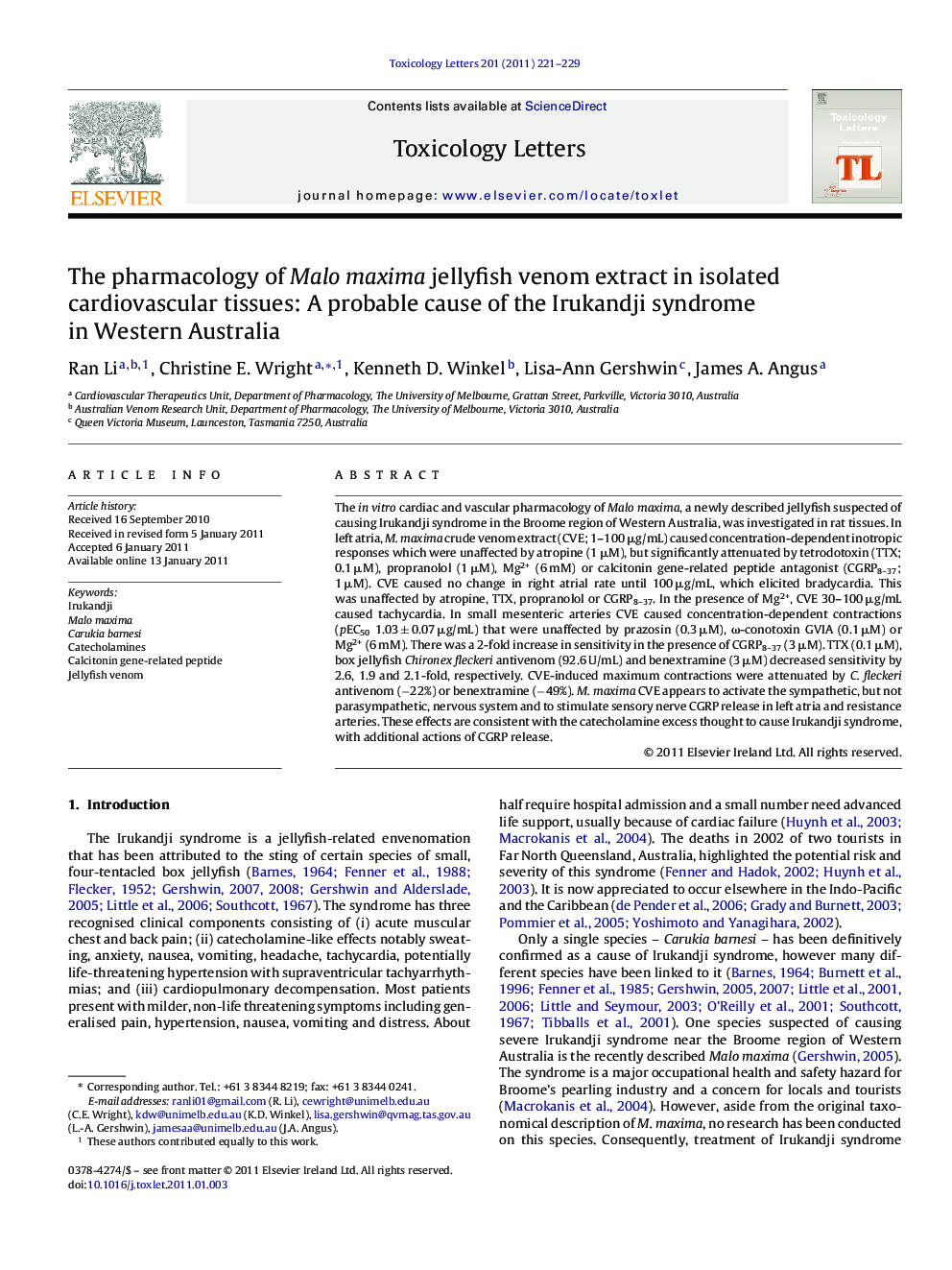| Article ID | Journal | Published Year | Pages | File Type |
|---|---|---|---|---|
| 5860771 | Toxicology Letters | 2011 | 9 Pages |
The in vitro cardiac and vascular pharmacology of Malo maxima, a newly described jellyfish suspected of causing Irukandji syndrome in the Broome region of Western Australia, was investigated in rat tissues. In left atria, M. maxima crude venom extract (CVE; 1-100 μg/mL) caused concentration-dependent inotropic responses which were unaffected by atropine (1 μM), but significantly attenuated by tetrodotoxin (TTX; 0.1 μM), propranolol (1 μM), Mg2+ (6 mM) or calcitonin gene-related peptide antagonist (CGRP8-37; 1 μM). CVE caused no change in right atrial rate until 100 μg/mL, which elicited bradycardia. This was unaffected by atropine, TTX, propranolol or CGRP8-37. In the presence of Mg2+, CVE 30-100 μg/mL caused tachycardia. In small mesenteric arteries CVE caused concentration-dependent contractions (pEC50 1.03 ± 0.07 μg/mL) that were unaffected by prazosin (0.3 μM), Ï-conotoxin GVIA (0.1 μM) or Mg2+ (6 mM). There was a 2-fold increase in sensitivity in the presence of CGRP8-37 (3 μM). TTX (0.1 μM), box jellyfish Chironex fleckeri antivenom (92.6 U/mL) and benextramine (3 μM) decreased sensitivity by 2.6, 1.9 and 2.1-fold, respectively. CVE-induced maximum contractions were attenuated by C. fleckeri antivenom (â22%) or benextramine (â49%). M. maxima CVE appears to activate the sympathetic, but not parasympathetic, nervous system and to stimulate sensory nerve CGRP release in left atria and resistance arteries. These effects are consistent with the catecholamine excess thought to cause Irukandji syndrome, with additional actions of CGRP release.
